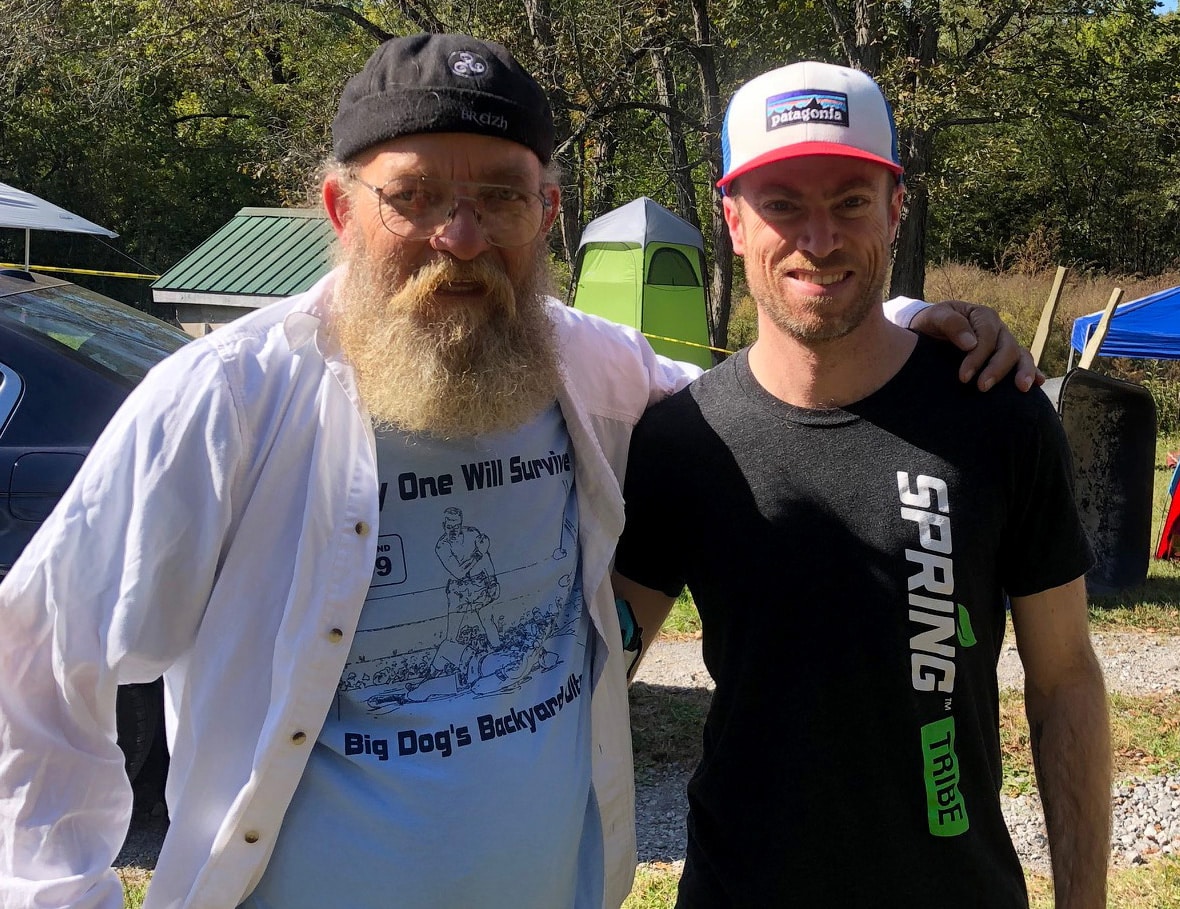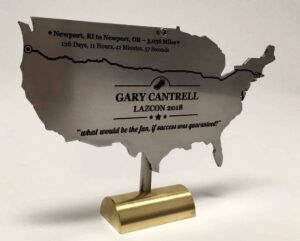2018 Big Dog’s Backyard Ultra Race

I’ve taken my running to extremes, and I’ve loved every minute of it.
In 2017, I vowed to run races that offered new and unusual experiences, so I applied to Big Dog’s Backyard Ultra Race in Bell Buckle, Tennessee. The race is a last-man standing event; you run a four-mile loop once an hour until you – or your competitors – have dropped out. I was ecstatic to be selected as one of the 70 starters for the 2018 race.
Gary Cantrell (aka Lazarus Lake), famed race director of Barkley Marathons, founded the race, holds it on his property, and named it after an injured Pitbull he adopted called “Big.”
In 2017, the race featured an epic dual between two titans – Guillaume Calmettes and Harvey Lewis. In the end, Guillaume won, running 59 hours and 246 miles (395 km) – a new record.
Preparing for the race
To get ready for the race, I worked with my long-time coach, Ryan Knapp, but I also needed assistance with injury prevention and mobility training. I contacted Jesse Fuller, a trainer in Washington, DC, for remote coaching, which was a game changer. Jesse assigned workouts, critiqued my running through videos, and was always available.
My training appeared to be going great until August, when I felt pain in my right leg. The pain wasn’t going away. I had a bone scan and MRI 10 days before the race, and the doctor told me I had a low-grade stress reaction of my right tibia. It wasn’t a stress fracture, so I considered the nature of the race: only the winner escapes being branded with a DNF (“Did Not Finish”). And it’s a looped course, which means you don’t need to run particularly fast. This meant that I could start the race and, if things went sideways, I could stop.
I packed my gear and headed to the race with my friend, Gavin Harmacy, who agreed to be my crew at the race.
The Race
 After setting up, we walked over to say hello to Gary. I presented him with an award I designed commemorate his walk across the US this summer. Thanks to Blaine McFarlane for making this amazing award.
After setting up, we walked over to say hello to Gary. I presented him with an award I designed commemorate his walk across the US this summer. Thanks to Blaine McFarlane for making this amazing award.
On a rainy and cold Saturday, Oct. 20 at 6:40 a.m., I lined up with 69 runners in the starting corral. The cowbell rang, and we were off.
The race does not reward speed – the key is energy conservation. It’s a mental race. The crowd doesn’t thin out until runners start getting knocked out of the race for not making the cut-off time. So, if you choose to settle behind other runners, you may risk not making the cut-off time.
I ran the first loop in 54 minutes, and had enough time to refill my water bottle, eat something, and get ready to go again. The race process for every loop is:
- 58 minutes: The two-whistle warning blows.
- 59 minutes: A one-whistle warning blows (runners to the corral for the start).
- 59:30: A 30-second warning.
- 59:50: A countdown from 10, a cowbell, and the next loop begins.
Throughout the race, you have to make mental notes (i.e. 20-minute mark was the field, 33-minute mark the V tree) to ensure you hit your time marks to keep your pace and make the time.
My race results: 100 miles in 23:50 (this is three hours, 25 minutes faster than my first crack at 100 miles earlier this year).
The winner, Johan Steene of Sweden, ran the race in 68 hours and 283 miles – a truly staggering feat of endurance.
[envira-gallery id=”3650″]
Key race takeaways:
- Ultrarunner Superstars. You get to run next to some of the best ultrarunners in the world (among them, Guillaume Calmettes, Johan Steene, Harvey Lewis, and Maggie Guterl).
- Race-trail markings are invaluable for time checks and pacing.
- Switching running gear matters. It’s wise to think before you switch your running shoes in the race – your feet swell, and the new shoes don’t fit as well. And once you start a loop, you can’t go back, so you’ll spend the whole loop in those shoes.
- Don’t run your laps too fast. You don’t want to get back to the start too early or you’ll get cold, as temperatures drop quickly. Five to six minutes gives you enough time to stay warm and refuel.
- Refuel no matter what. As the race continues, you may have stomach issues and feel as though you don’t want to eat anything, but it’s a must to keep you warm and give you the required calories. Thanks to Gavin for the hot coffee, soup, Mr. Noodles, Pringles – and insisting that I eat. Tough love got me through the race.
- Never set a goal. In an interview last year, Guillaume Calmettes said, “You should never set a goal for yourself at this race. Because if you do, when you hit that goal, you’ll feel successful and stop.” He’s right.
- Gavin Harmacy: for pushing me and helping me reach my goal.
- Ryan Knapp and Jesse Fuller: for your coaching wisdom and encouragement.
- Alan and Miriam Sielbeck: for your friendship and very generous lodging and car loan while I was in Tennessee.
If you’re thinking about running this race, I’m more than happy to answer your questions.
Read a more-detailed post about my race experience on Facebook.




